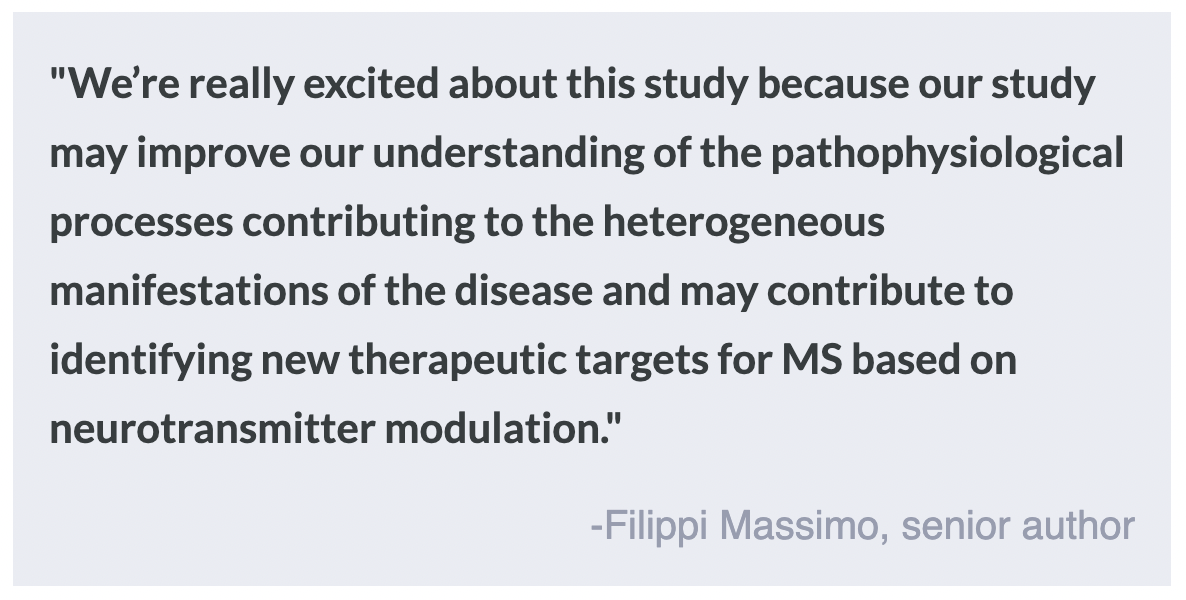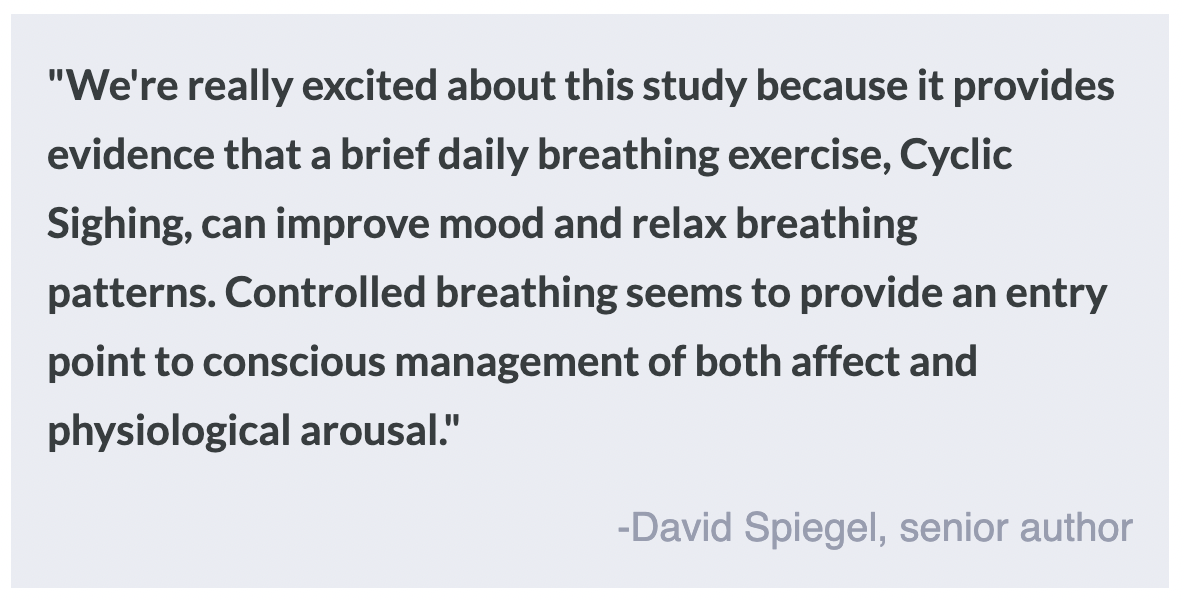Gray Matter Atrophy Correlates with Neurotransmitter Dysfunction in Multiple Sclerosis
Post by Lincoln Tracy
The takeaway
Region-specific gray matter atrophy may impact neurotransmitter systems (e.g., dopamine, serotonin), which may contribute to clinical manifestations and symptoms of multiple sclerosis.
What's the science?
Multiple sclerosis (MS), a chronic neurological disease, displays specific topographic and temporal patterns of gray matter atrophy. The progression of gray matter atrophy corresponds with clinically relevant symptoms of MS, such as locomotor disability, cognitive impairment, fatigue, and depression. Evidence from studies of MS and other neurodegenerative disorders suggests an imbalance of excitatory and inhibitory neurotransmitters as one of the pathological substrates contributing to neuro-axonal loss and progressive gray matter atrophy, underlying the development of specific symptoms. This week in Molecular Psychiatry, Fiore and colleagues sought to determine whether MS severity and common MS symptoms were associated with atrophy of specific brain regions that were spatially correlated with specific neurotransmitters.
How did they do it?
The authors recruited 286 MS patients (173 women) and 172 neurologically normal individuals (92 women) to act as controls. All MS patients completed a neurological evaluation and a series of tests and questionnaires to measure their cognitive function, fatigue, and depression, before undergoing a magnetic resonance imaging (MRI) scan to quantify gray matter atrophy. The atrophy patterns in the MRI scans were correlated with maps of where different neurotransmitter systems were distributed throughout the brain. The authors compared regional gray matter volumes between MS patients and controls to assess what areas of the brain showed significant gray matter atrophy and whether such a pattern of gray matter atrophy was spatially correlated with specific neurotransmitter systems. The authors also tested whether patients with different clinical MS phenotypes (e.g., relapsing/remitting or progressive) displayed differences in brain atrophy. Finally, they explored whether differences in cognitive impairment, fatigue, and depression were associated with gray matter atrophy and neurotransmitter distribution in patients with MS.
What did they find?
First, the authors found MS patients had more severe gray matter atrophy compared to the neurologically normal controls, specifically in the fronto-temporo-parieto-occipital regions and the cerebellum. These atrophied areas were associated with a higher distribution of serotonin, dopamine, mu-opioid, noradrenaline, acetylcholine, and glutamate receptors. Second, progressive MS patients had more gray matter atrophy in the cerebellum, hippocampus, left temporal cortex, left putamen, and left insula than patients with relapsing-remitting MS, but this pattern of gray matter atrophy was not associated with any significant neurotransmitter distribution. Finally, cognitively impaired MS patients had more widespread atrophy in the cortex, deep nuclei, and cerebellum compared to cognitively preserved MS patients. The atrophied regions were spatially correlated with a higher distribution of dopamine, noradrenaline, serotonin, acetylcholine, and glutamate receptors. MS patients with fatigue had atrophy in the bilateral precuneus and a suite of other brain regions including the right superior temporal gyrus, but no associations with neurotransmitter distribution were observed. There were no differences in gray matter atrophy between MS patients with and without depression. Overall, these results suggest gray matter atrophy in specific brain regions may negatively affect specific neurotransmitter systems, which in turn may contribute to different presentations and symptoms of MS.
What's the impact?
The results of this study may improve our understanding of the pathophysiological processes underlying the various clinical manifestations of MS, including common symptoms such as cognitive impairment and fatigue. If future studies confirm these results, the findings could pave the way for the development of new neurotransmitter-modulating therapies for MS, which may result in improved quality of life for patients.






